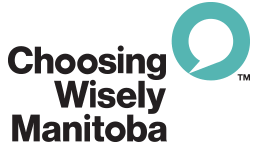Dr. Lalitha Raman-Wilms

If you’re a Canadian over the age of 65, there’s a good chance your medicine cabinet is a little crowded. Approximately two thirds of Canadians aged 65 or older are taking five or more prescription medications, with more than a quarter being prescribed 10 different drug classes. In addition, one may be taking over-the-counter medications such as acetaminophen, ibuprofen or supplements. These staggering numbers are one of the reasons why I’m passionate about optimizing medication use and managing polypharmacy through deprescribing.
Polypharmacy is generally defined as the simultaneous use of multiple drugs by a single patient to treat one or more conditions; more and more, we think of polypharmacy as using more drugs than are medically needed. The more medications a patient is on, the more potential there is for drug interaction and harmful side effects.
It’s a slippery slope. Polypharmacy can lead to prescription cascades, which is when the side effects of a drug are misdiagnosed as symptoms of a new condition leading to further prescriptions and potentially additional side effects. These adverse reactions to multiple medications increase the risk of falls, which can result in injuries, fractures and hospitalizations.
Adverse drug effects take a toll on the health care system, and more importantly on the patient and their support system. Polypharmacy is a prime example of how ‘more is not always better’ and how we can apply Choosing Wisely principles to improve health outcomes.
Fortunately, thanks to campaigns such as Opioid Wisely and Using Antibiotics Wisely, awareness around deprescribing is growing. Deprescribing is the planned and supervised process of safely reducing or stopping the use of medication that may be causing harm or is no longer providing a benefit to the patient.
It’s not an easy process. It’s a team effort that starts with a conversation between the health care provider and the patient. It’s important to involve the patient in the decision-making process and ensure that the patient’s goals and values are considered and their concerns are addressed.
While medications such as antibiotics and pain medication can be very beneficial to the patient and improve health outcomes, there’s clear evidence that the inappropriate use of medications hinders optimal health outcomes. It’s important for both patients and health care providers to routinely question whether a medication is needed or if there are alternative strategies that can be considered instead. The same applies every time a medication is renewed.
Education is key to creating this mindset. In my opinion Choosing Wisely is something that should be included in every health care curriculum. Any test, medication, or treatment requires a thoughtful, evidence-based decision, so the earlier we start embedding that concept in students, the better.
